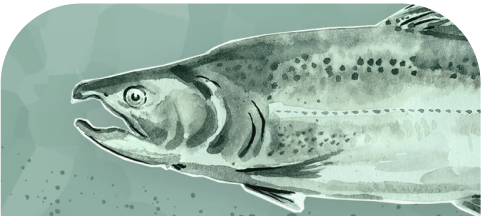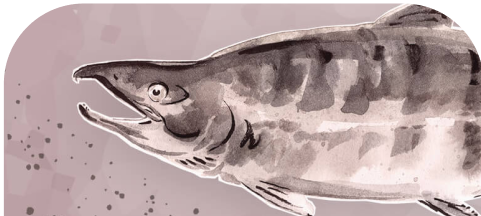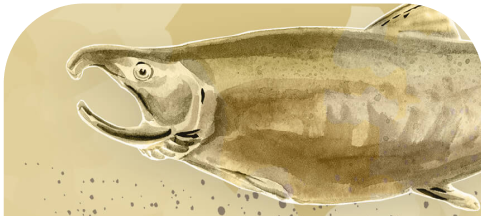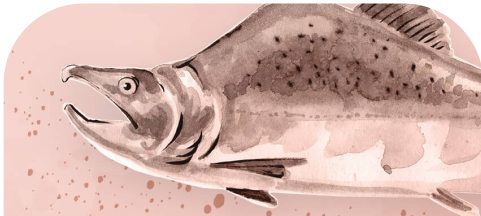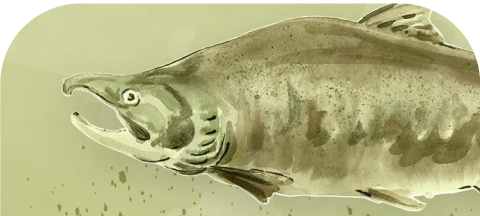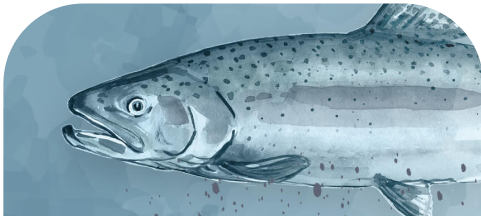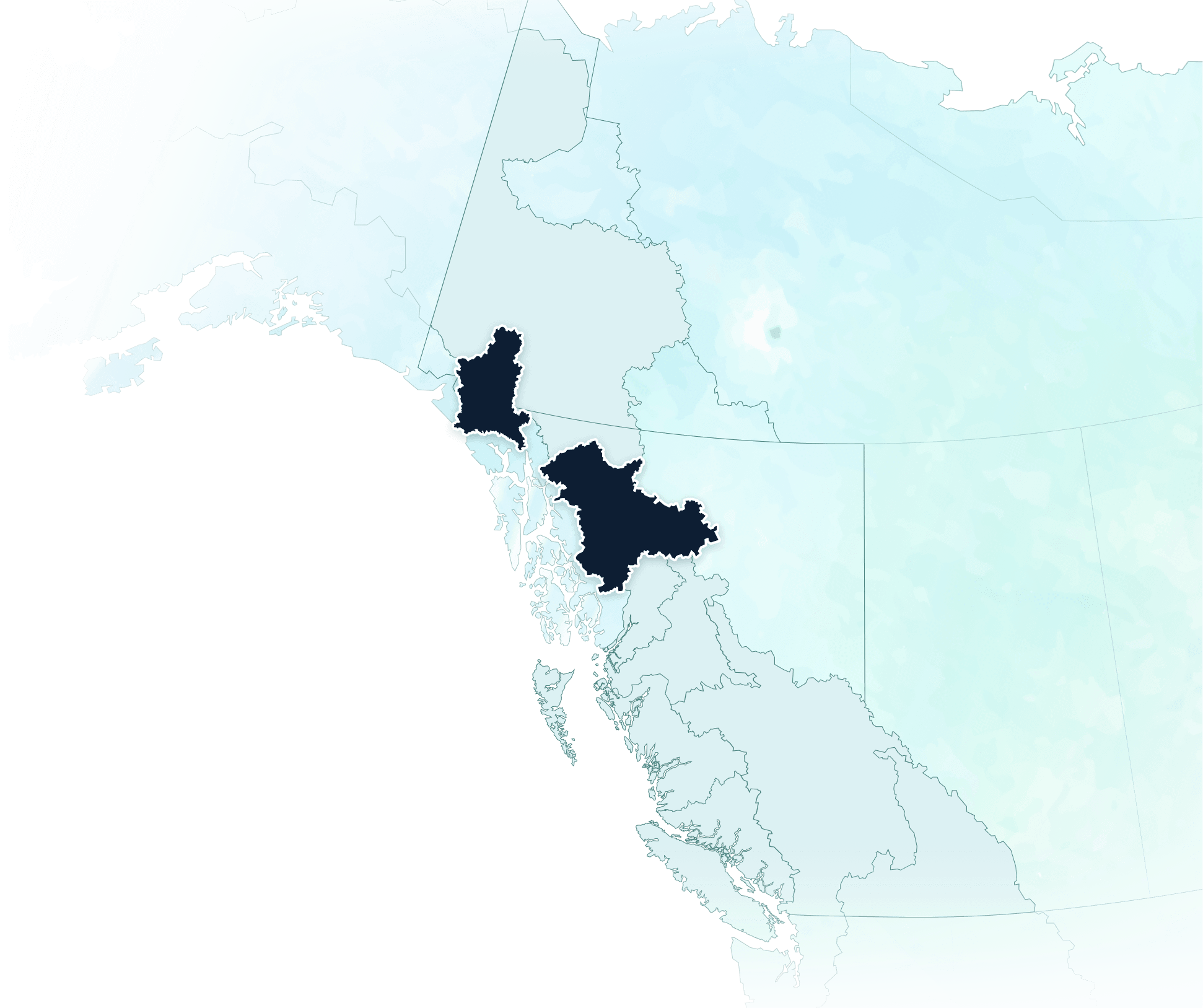Northern Transboundary
Most species are below average but recent increases in sockeye spawners are encouraging
The Northern Transboundary region comprises six distinct watersheds - the Alsek, Chilkat, Taku, Whiting, Stikine, and Unuk - each of which originate in Canada and flow into the Pacific Ocean in southeast Alaska, U.S.
Chinook, chum, and pink salmon are all well-below average and are a significant conservation concern. For these three species, current abundance is half or less of their long-term average and they are all experiencing persistent and significant long-term declines.
Chum salmon are faring the worst of all species in the Northern Transboundary region, however chum assessments for this vast region are based on a single fish wheel in the Taku River and may not be representative of all Northern Transboundary chum populations.
Although sockeye spawners are currently above the long-term average and have a positive short-term trend, this is largely driven by increases in Taku river-type sockeye.† Total abundance, including catch, is below average with short-term declines, reflecting curtailed sockeye fisheries and indicating that Northern Transboundary sockeye are still of conservation concern.


State of Salmon - Northern Transboundary
OUR APPROACH
There are different ways to measure the state of salmon, and each approach tells us something unique about how salmon are doing.
CURRENT STATE is the spawner or total abundance over the most recent generation as a per cent anomaly from the long-term average and provides information on how abundant salmon are now relative to past years.
TRENDS measure the direction of change, either over the short-term (most recent three generations) or long-term (all available years). This is complementary information to the current state, and a species that has a declining trend may be a conservation concern even if the current status is above average.
Click on a species for an interpretation of the current state and trends.
Arrows indicate if the trend in abundance is increasing or decreasing
A horizontal line indicates if the trend in abundance is stable
A question mark indicates an unknown current state or trend due to a lack of readily accessible data


SPECIES NOT PRESENT
SPECIES NOT PRESENT
SPECIES NOT PRESENT
SPECIES NOT PRESENT
SPECIES NOT PRESENT
SPECIES NOT PRESENT
SPECIES NOT PRESENT
SPECIES NOT PRESENT
SPECIES NOT PRESENT
SPECIES NOT PRESENT
SPECIES NOT PRESENT
SPECIES NOT PRESENT
How to Interpret this Graph
Each fish above shows the per cent anomaly of current spawner or total abundance over the most recent generation compared to the long-term average (horizontal line) for each region and species.
Interested in more learning more? Check out the Pacific Salmon Explorer for a data-driven look at Pacific salmon Conservation Units and their habitats within each region.
For more details on our assessment approach, view our Methods.
Well-above long-term average. No conservation concern.
Above long-term average. Current outlook is good.
At or near long-term average. Precaution is warranted.
Below long-term average. Current outlook is poor.
Well-below long-term average. Significant conservation concern.
Unknown current state due to a lack of readily accessible data.

REGION PROFILE
Northern Transboundary
Conservation Units are irreplaceable groups of salmon that have unique genetic and life-history traits. Maintaining multiple Conservation Units within a region strengthens the resilience of the species as a whole and helps it withstand and adapt to changing conditions. The number of Conservation Units provides a good indication of the salmon biodiversity in the region.
SPECIES NOT PRESENT
Major Salmon-Bearing Rivers
The Northern Transboundary region comprises six watersheds that cover 110,000 square kilometres and provide an extensive diversity of freshwater spawning and rearing habitat for Chinook, coho, chum, pink, and sockeye salmon, along with steelhead in some watersheds. The Taku watershed has the highest salmon biodiversity in the region with 13 Conservation Units and represents one of the largest runs of sockeye salmon in northern British Columbia.
The transboundary nature of the region introduces several challenges for salmon conservation and management and requires international cooperation to ensure the sustainable management of salmon populations. Under the Pacific Salmon Treaty, an international agreement and cooperative fishery management process between Canada and the United States, the Transboundary Panel is responsible for the management, monitoring, and enhancement of salmon originating in the Alsek, Taku, and Stikine watersheds. However, the smaller Chilkat, Unuk, and Whiting watersheds are not within the scope of the Treaty, meaning that little salmon monitoring and assessment is carried out for these smaller, but important salmon-bearing watersheds.


